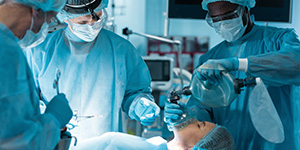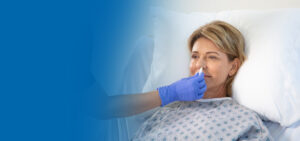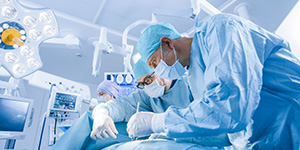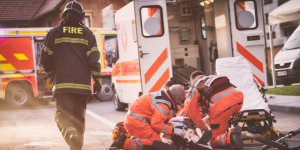Maintaining patient temperature during surgery is a top priority in every operating room. Ensuring that patients maintain a normal core body temperature between 36°C and 38°C not only makes patients more comfortable; it also contributes to smoother surgical recovery.
Patient warming devices play a vital role in hypothermia prevention, keeping surgical patients at normothermia throughout the perioperative journey. Resistive patient warming systems offer an especially effective method of maintaining patient temperature.
Resistive patient warming involves heating reusable resistive mattresses or blankets by passing a low-voltage electric current through semiconductive systems. This helps maintain patient temperature throughout the perioperative journey in a way that’s both efficient and comfortable for the patient.
The Perioperative Journey
Hypothermia prevention is crucial throughout the perioperative journey, which consists of three phases:
- Preoperative — the hour before induction of anesthesia, when the patient is prepped for surgery
- Intraoperative — the total time the patient is under anesthesia, from induction to when the patient is transferred to the recovery area
- Postoperative — the 24 hours after the patient has entered the recovery area.
Ideally, hypothermia prevention should begin with patient education. When patients and their loved ones are aware of how maintaining the patient’s core body temperature can lower the risk of postoperative complications, they can take steps to stay warm ahead of time and alert hospital staff if they feel cold. While patient involvement is important, patients can’t necessarily prevent hypothermia on their own with extra layers or blankets.
The Challenge of Hypothermia
Hypothermia is a preventable surgical complication, and yet up to 20% of surgical patients experience unintended perioperative hypothermia. Surgical patients are at an increased risk of hypothermia because anesthetics inhibit our thermoregulatory mechanisms, causing blood vessels to constrict and limiting blood flow to tissues while decreasing white blood cells.
The average adult can lose between 0.5 to 1.5 degrees Celsius under anesthesia, making surgical patients especially vulnerable to hypothermia. Hypothermia leads to an increased risk of adverse outcomes including infection, postoperative pain, poor incision healing, increased blood loss, and myocardial events.
Maintaining patient temperature through both active and passive warming is essential to lowering these risks in every stage of the perioperative journey.
Preventing Hypothermia in the Preoperative Stage
Preoperative warming takes place in the hour before a patient undergoes anesthesia. At this stage, each patient should be assessed for their risk of hypothermia based on factors including:
- A preoperative temperature below 36.0° C
- A risk of cardiovascular complications
- A combination of general and regional anesthesia
- A major or intermediate surgery
- An American Society of Anesthesiologists (ASA) grade 2 to 5
When two or more of these risk factors are present, it’s important to begin active warming with a method like resistive patient warming (if clinical urgency allows).
Active warming that transfers heat to the patient is most effective for preoperative warming in high-risk patients. Passive warming methods like blankets or warm layers are important practices for maintaining body temperature in patients of all risk levels, though passive warming is less immediately effective.
Intraoperative Warming and Postoperative Recovery
Core body temperature maintenance is crucial during surgery, when patients are exposed to a colder environment. Patient temperature should be measured before anesthesia induction and then every 30 minutes until surgery ends to monitor for hypothermia.
Intraoperative warming should be considered in every aspect of the surgical environment, like ensuring that intravenous fluids are warmed to 37°C and maintaining an ambient temperature of at least 21°C while the patient is exposed. Additionally, forced-air warming devices or resistive patient warming devices can offer active warming for better hypothermia prevention.
Active warming during the intraoperative phase is especially important when surgery lasts for more than 30 minutes or when the patient is at high risk of hypothermia. Resistive patient warming through heated mattresses or blankets can deliver warmth without compromising the surgical process, since they can be adjusted based on the patient’s size and surgical position.
The risk of hypothermia persists in the postoperative phase, as patients begin their recovery. Resistive patient warming continues to benefit patients during recovery, when patient temperature should still be monitored on a consistent basis for 24 hours after surgery.
The Astopad: A Game-Changer in Resistive Patient Warming
In recent years, the Astopad has emerged as a leading innovative solution for resistive patient warming. This reusable system is safe and easy to operate, with independently controlled connections for precise temperature regulation and warming blankets that can be placed over or underneath the patient. Each Astopad blanket includes 8 sensors for enhanced patient safety and better temperature control in precise 0.5°C increments.
Unlike traditional warming methods, the Astopad delivers continuous patient warming through every stage of the perioperative journey. The battery-operated, portable system can travel with the patient from pre-op to surgery, and then to the recovery room. This ensures that the patient maintains their core body temperature without losing warmth between surgical stages.
Patient warming devices like the Astopad represent a crucial development in healthcare technology. With resistive patient warming, providers now have the ability to maintain patient temperature throughout the perioperative journey, ultimately leading to more successful surgical outcomes.
We’re ready to help deliver positive patient experiences and better clinical outcomes. Get in touch with us for more information about the Astopad Resistive Patient Warming System or our other innovative solutions.









